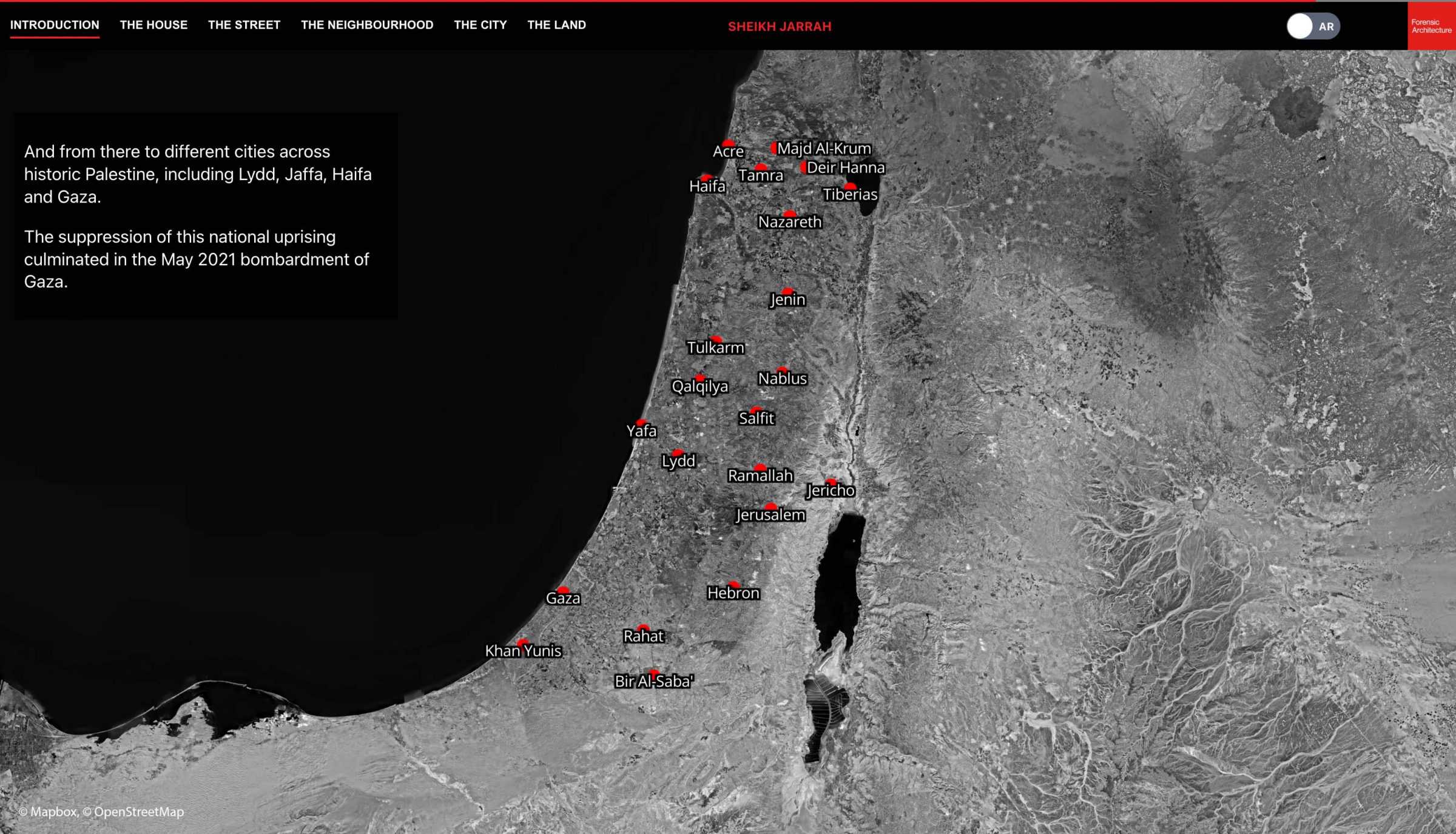Methodologies
Forums
Exhibitions
Working with activists and lawyers in Jerusalem, Forensic Architecture has constructed an interactive urban narrative explaining the policies and practices through which Palestinian families in the neighbourhood of Sheikh Jarrah are being forcibly displaced of their properties, and their protracted struggle with the Israeli courts and various settler groups. The story traverses multiple scales starting from families whose homes are invaded by settlers, and moving to the street, neighbourhood, the city and the land, showing how Israeli settler-colonial practices and apartheid planning combine to displace Palestinians.
Today, Palestinian life under apartheid in Jerusalem is governed by separate but interrelated systems of settler colonial oppression:
A military occupation that denies Palestinians from the West Bank access to the city, a civilian administration in the eastern part of the city, and systemic discrimination meant to erase the majority of Palestinian political and cultural life in the western side.
Jerusalem is at the epicentre of a broader apartheid system which manifests itself differently in different areas. With the support of activists and lawyers within Jerusalem, Forensic Architecture has built a 3D interactive platform that reveals how Israeli colonial practices and apartheid policies mobilise infrastructure and the lived environment to displace Palestinians at the level of the street, the neighborhood, the city and on the land more broadly.
The House
The platform begins with the story of the Al-Kurd family whose home has been invaded and partly occupied by settlers, and who are now at risk of being forcibly expelled from the rest of their house, where they have lived since 1956.
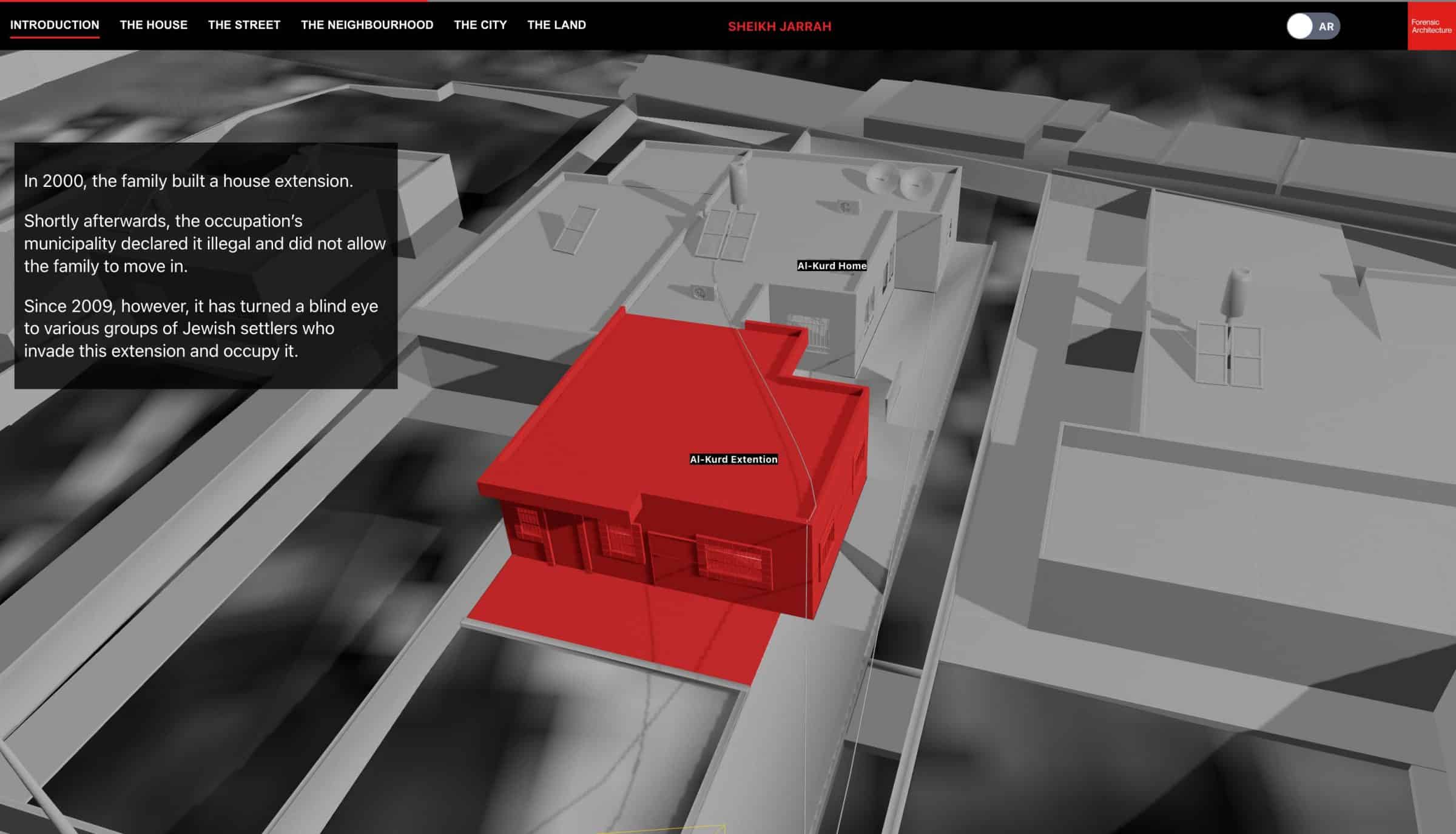
A pillar of Israeli apartheid, laws allow for restitutions of Jewish property lost during the 1948 war but not of Palestinian property. As such, while their home is being claimed on behalf of alleged previous owners, the Al-Kurd family cannot reclaim their properties lost in Haifa during the Nakba.
The Street
The Uthman Ibn Affan street in Sheikh Jarrah is the location of many Palestinian homes where families live under the threat of eviction.
The Al-Kurd family is one of 28 Palestinian refugee families in Sheikh Jarrah that are facing—or have already been subjected to—forced displacement following occupation and harassment by Jewish settlers. All of these families are refugees, having been forcibly displaced from different parts of Palestine during the Nakba.

Using 3D modelling and image-matching, the platform explains how the street where the families live has become a site of solidarity where residents and activists gather to protest and resist imminent expulsions by the Israeli occupation forces (IOF).
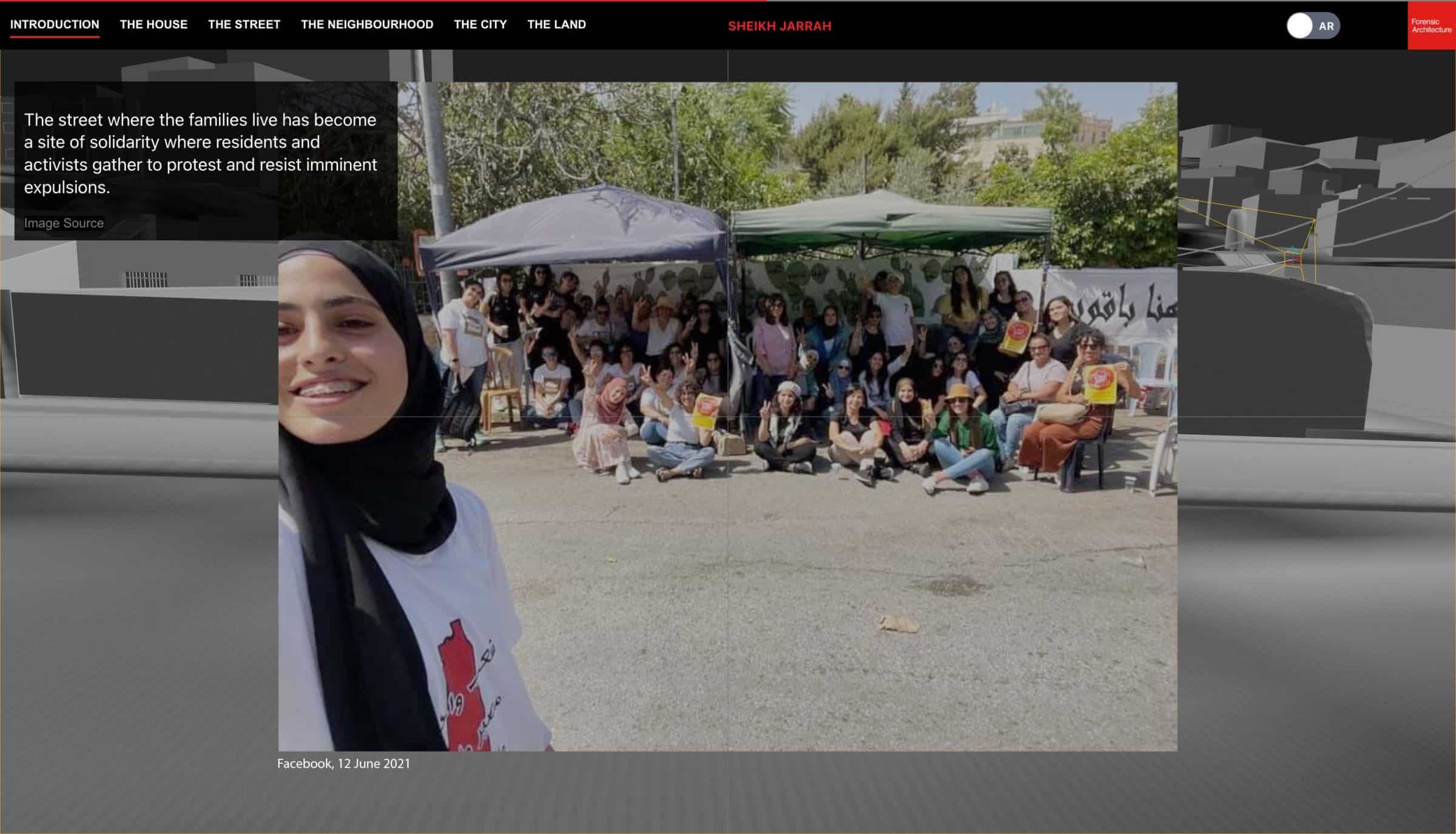
In May 2021, the wave of solidarity with the families in Sheikh Jarrah ignited protests in other parts of the city, especially around the Al-Aqsa and Bab al-Amoud (Damascus Gate) areas, and spreading to different cities across historic Palestine, including Lydd, Jaffa, Haifa and Gaza.
The suppression of this national uprising culminated in the May 2021 bombardment of Gaza.
The Neighbourhood
Established in the late 19th century, the Sheikh Jarrah neighbourhood was a destination for upper class Jerusalemites like the Al-Husseini family, who preferred to live outside the bustle of the Old City.

When the western part of Jerusalem was occupied during the Nakba, Palestinians fled to the eastern part of the city, which came under Jordanian control in 1948—including the Sheikh Jarrah neighbourhood.
In 1956, an agreement between UNRWA and the Jordanian government gave land to 28 families of Palestinian refugees, together with permission to build houses in Sheikh Jarrah and with the stipulation of full ownership by 1959, in return for relinquishing their refugee status. The Al-Kurds are one of these families.
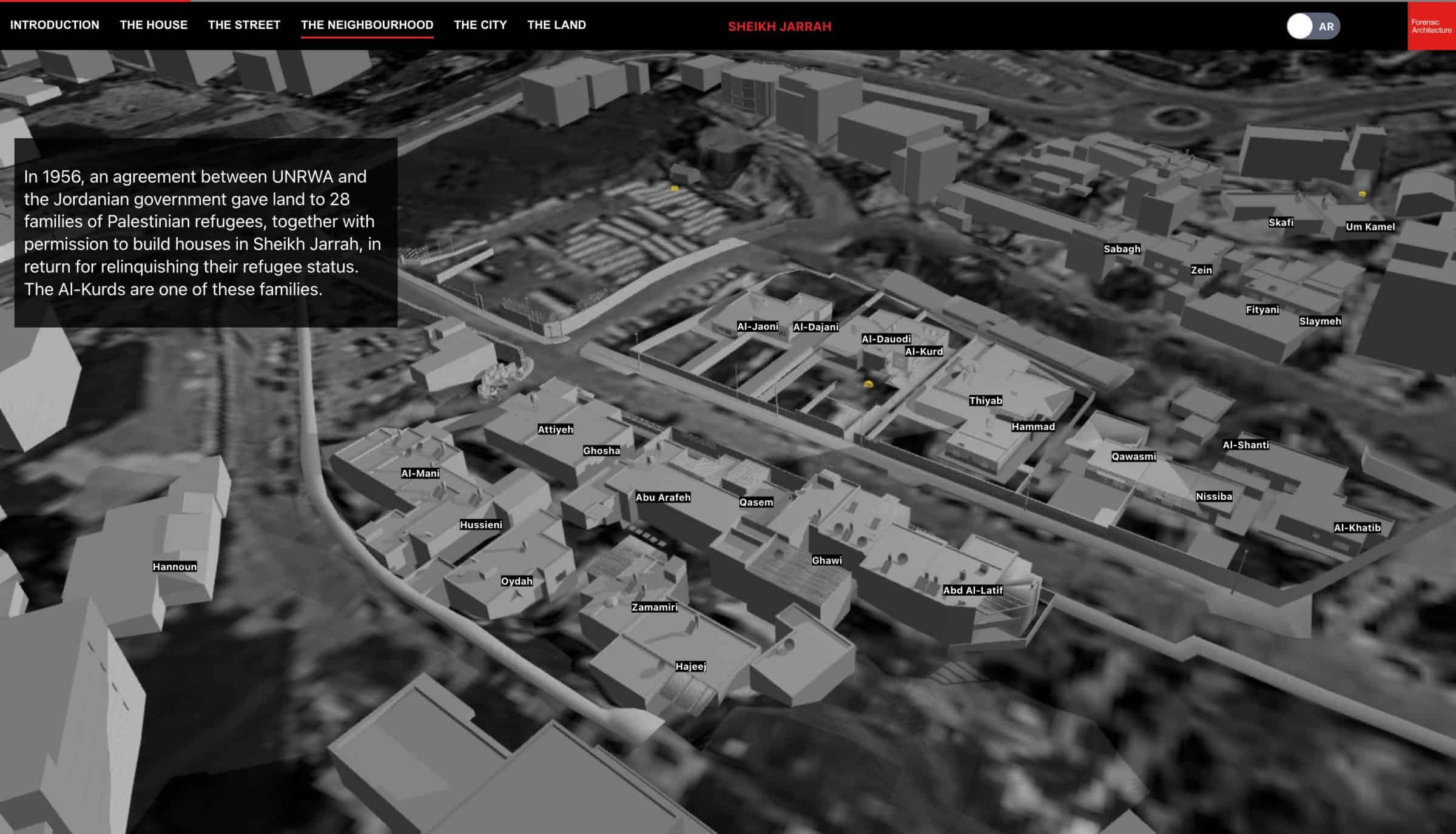
However, ownership had not yet been transferred by the time the eastern part of Jerusalem was occupied and unilaterally annexed during the 1967 war.
In 1982, the ownership status of the 28 Palestinian families in Karm Al-Jaoni was not recognised and they were designated merely as tenants (‘protected tenants’) without ownership claims for their properties.
Our interactive platform begins to tell the story of around a dozen of these Palestinian families facing forced displacement, who have been in a protracted legal battle with the Israeli courts and various settler groups, the latest being Nahalat Shimon.
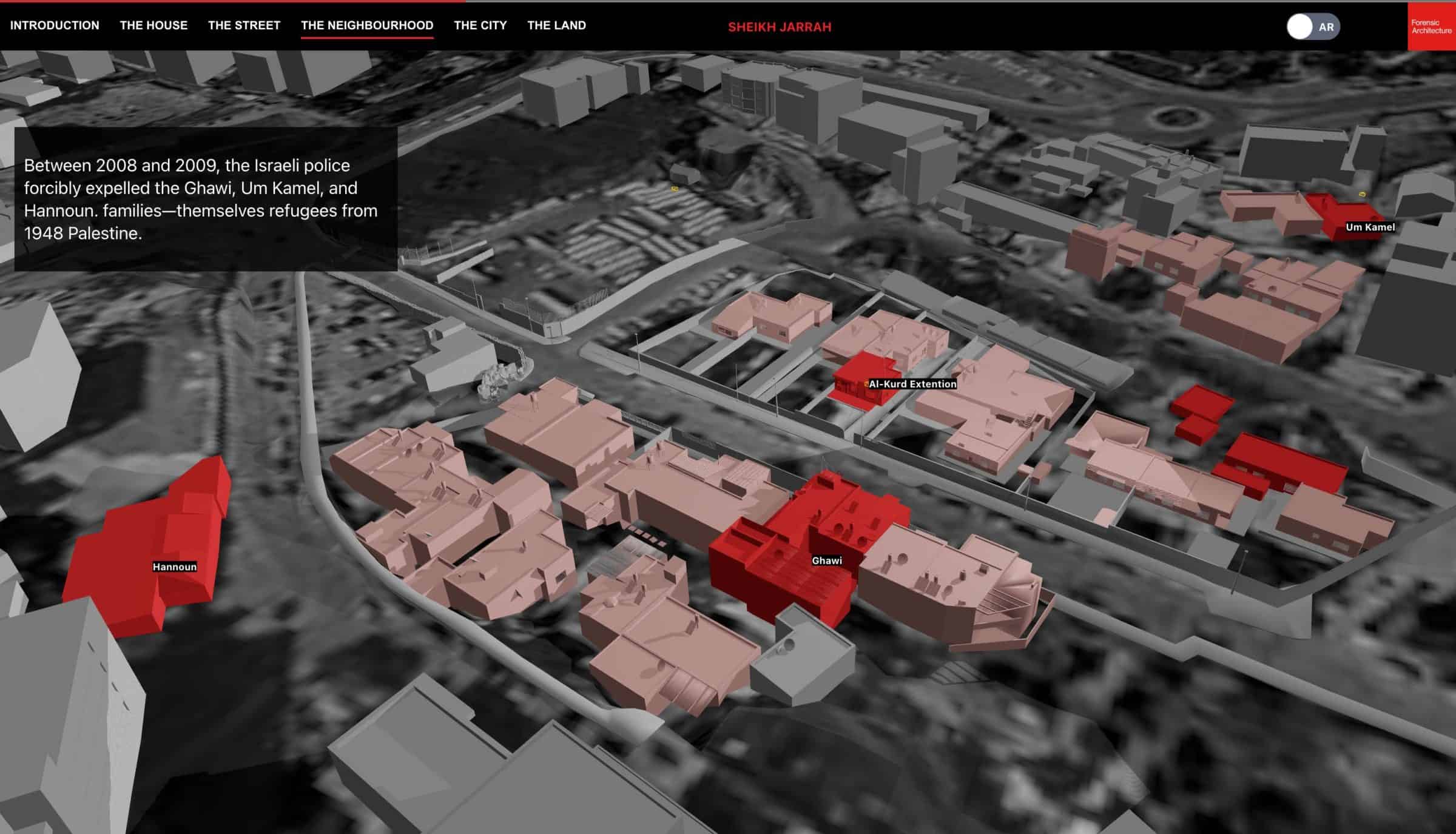
In addition to regular confrontations with settlers invading their family homes and properties, Palestinian families in the neighbourhood are faced with violence from the Israeli police who assist the settlers to occupy their houses.
As part of their resistance, families facing ‘eviction’ notices started a solidarity campaign that reached its peak in May 2021 as the evacuation date became imminent.
The City
Invasion of homes and legal petitions by settler groups are only some of the multiple ways that Palestinians are displaced from Sheikh Jarrah, and Jerusalem more broadly.
Israeli practices of displacement include, among others, the establishment of illegal Jewish settlements (what observers have called ‘a living wall’ that surrounds and bisects Palestinian areas), the zoning of large sections of the city as ‘green’ areas, the building of a concrete apartheid wall through Palestinian areas, and urban infrastructure in the form of roads and rail lines designed to cut apart and isolate Palestinian life in the city.
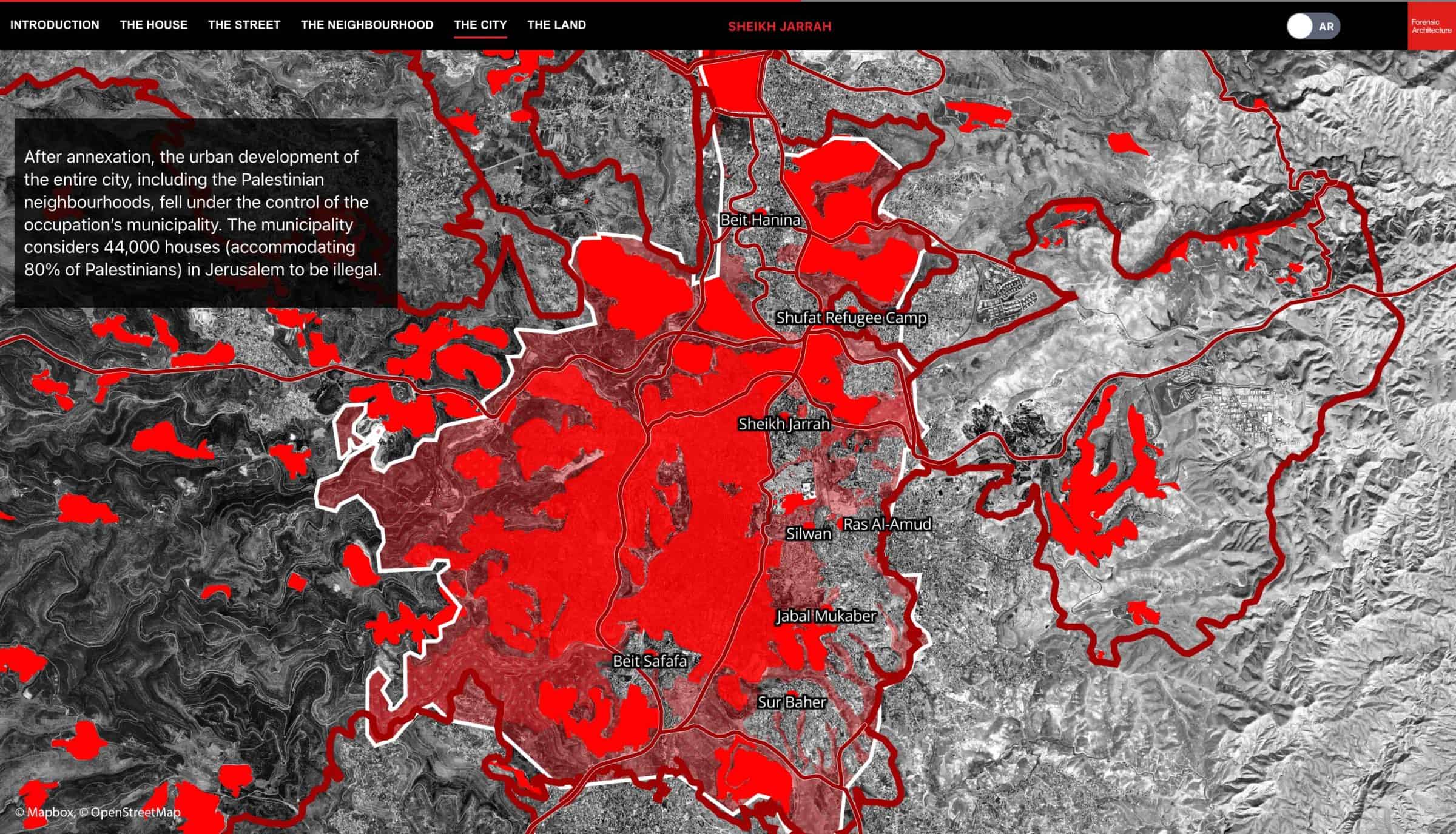
Together, these and other practices outlined in our interactive platform give the occupation authorities another pretext to confiscate Palestinian properties and to further contain Palestinian urban growth in Jerusalem.
The Land
The ethnic cleansing process that started with the Nakba in 1948 is still ongoing throughout all parts of historic Palestine.
However, as the national uprising sparked by forced displacements in Sheikh Jarrah in May 2021 revealed, despite close to eighty years of ongoing dispossessions, Palestinians refuse their separation and resist the violence imposed on them by Israel.
